As you are used to, I always illustrate my projects with a scheme made in Fritzing. The standard components are usually present in the default software. But often enough there are components not present. I then make these components myself. Because I have added a whole series again, I wanted to share my own new library, and here they are.

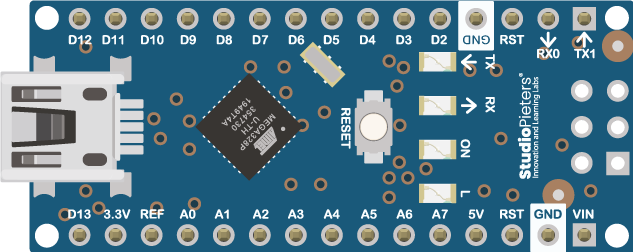
The Arduino Nano is a small, complete, and breadboard-friendly board based on the ATmega328 (Arduino Nano 3.x). It has more or less the same functionality of the Arduino Duemilanove, but in a different package. It lacks only a DC power jack, and works with a Mini-B USB cable instead of a standard one.
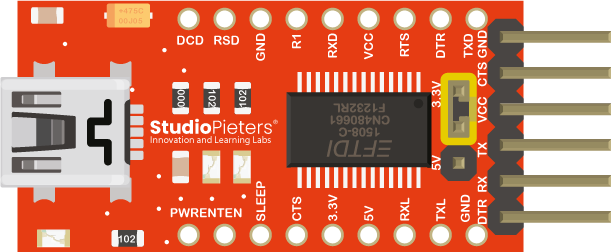
FTDI Adapter FT232RL USB naar TTL Serial voor 3.3V en 5V compatibe. When programming a regular arduino board, a USB cable is enough. But when rolling out your own standalone arduino circuits, it soon becomes as hassle to plug the ATmega chip into an Arduino board, or use a breadboard setup for the chip and use the Arduino as a programmer. An easy alternative is to equip your custom circuit with a header for connecting an FTDI Adapter.
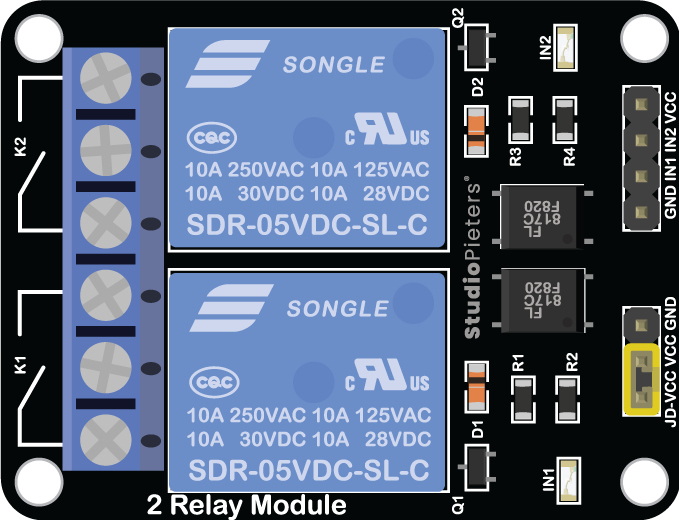
Relay module 2 channel 5V. The relays on this module can be controlled with a 5V signal from an Arduino or other microcontroller. By means of the relays it is possible to switch between alternating voltage (max. 230V) and direct voltage (max. 30V) up to 10A. With handy screw terminals for connecting the device to be switched. The relay has a normally open and normally closed contact.
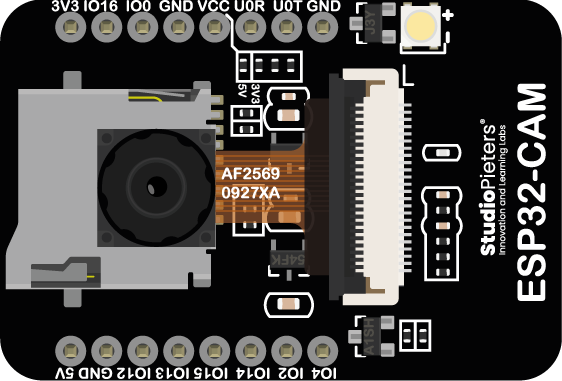
ESP32-CAM camera OV2640 2MP. A full ESP32 module with camera and Micro SD card slot. Programmable via the Arduino IDE (AI Thinker ESP32-CAM in the board manager). The OV2640 camera module has a 1/4 inch CMOS UXGA (1632 x 1232 pixels) image sensor. It is very small in size and has a low operating voltage of 1.7 to 3.3V. Camera is supplied separately and can be mounted by sliding the black part of the camera connector upwards. There is no USB serial chip on the board and it can only be programmed with a 3.3V serial converter. The pins can only handle 3.3V logic, these are connected directly to the ESP32.
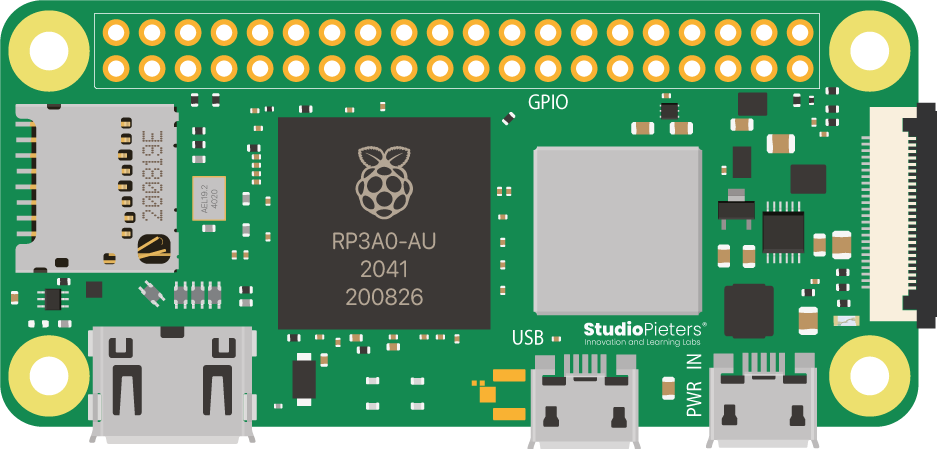
Just as small. Five times as fast. At the heart of Raspberry Pi Zero 2 W is RP3A0, a custom-built system-in-package designed by Raspberry Pi in the UK. With a quad-core 64-bit ARM Cortex-A53 processor clocked at 1GHz and 512MB of SDRAM, Zero 2 is up to five times as fast as the original Raspberry Pi Zero. Wireless LAN is built in to a shielded enclosure with improved RF compliance, giving you more flexibility when designing with Raspberry Pi Zero 2 W. All in the same tiny 65mm × 30mm form factor.
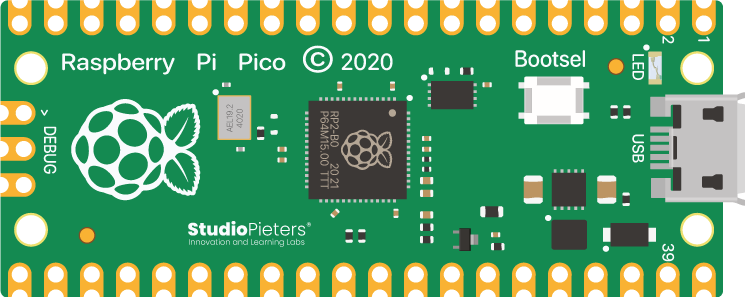
Designed by Raspberry Pi, RP2040 features a dual-core Arm Cortex-M0+ processor with 264KB internal RAM and support for up to 16MB of off-chip Flash. A wide range of flexible I/O options includes I2C, SPI, and — uniquely — Programmable I/O (PIO). These support endless possible applications for this small and affordable package.
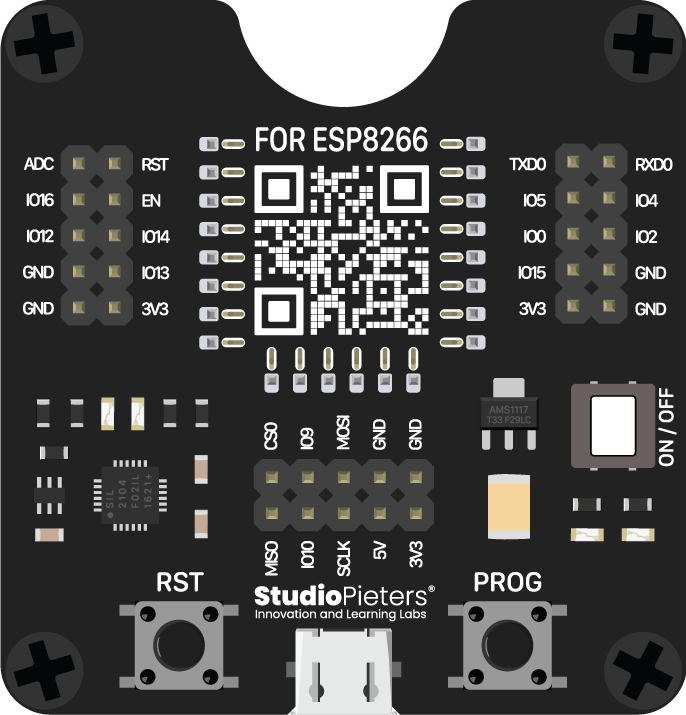
This is a programmer for the ESP8266 IC’s from Espressif (does not included ESP8266 Modules). The programmer allows the ESP-12S/12F/12E/07S/07 to easily mount or dismount to the programmer. This test board allows you to program the ESP-12S/12F/12E/07S/07 without having to soldering the ESP Modules. The module uses the CP210X USB to Bridge Chip onboard, two LED indicate the UART TX/RX, and It also supports auto-download circuit. The input is +5V Power from Micro USB connector, the output is 3.3V 800mA LDO with a Switch. All ESP8266 pin are avaible with male headers.
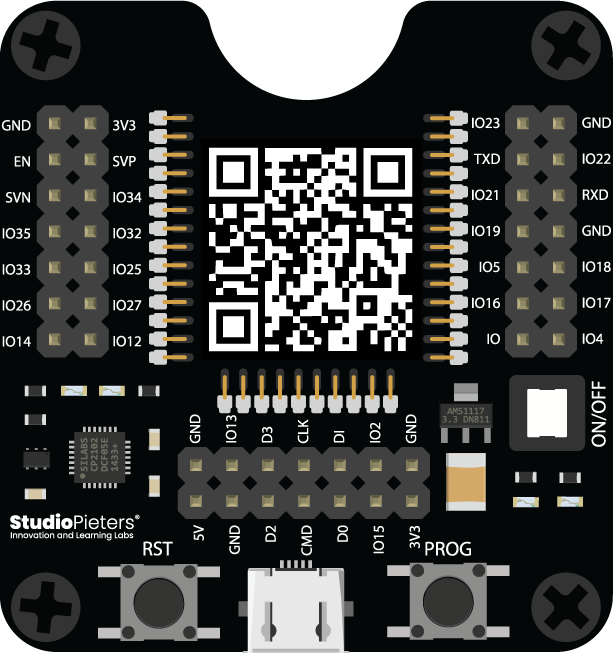
This is a programmer for the ESP32 WROOM format IC’s from Espressif (does not included the ESP32 Module). The programmer allows the ESP32-WROOM to easily mount or dismount to the programmer. This test board allows you to program the ESP32 without having to solder the ESP32 Module. It is more innovative than other ESP32 board. The module uses the CP2102 USB to Bridge Chip onboard, two LED indicate the UART TX/RX, and It also supports auto-download circuit. The input is +5V Power from Micro USB connector, the output is 3.3V 800mA LDO with a Switch. All ESP32 pin are avaible with male headers.
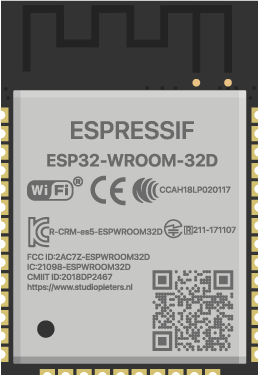
Makers around the world use ESP8266. It revolutionized the creation of systems that use WiFi. Now is the time for the successor. ESP32 is a stronger successor, at an affordable price. In addition to Wi-Fi we get support Bluetooth Low Energy (BLE, BT4.0, Bluetooth Smart) and 32 GPIO pins. In our opinion, ESP32 is an unquestionable pretender to be the king of the IoT platforms. At least in the coming years. A powerful dual-core processor, huge amount of operational memory, exceptional energy efficiency clearly speak in favor of this platform. It’s all at a relatively low price and programmable from the Arduino IDE level.
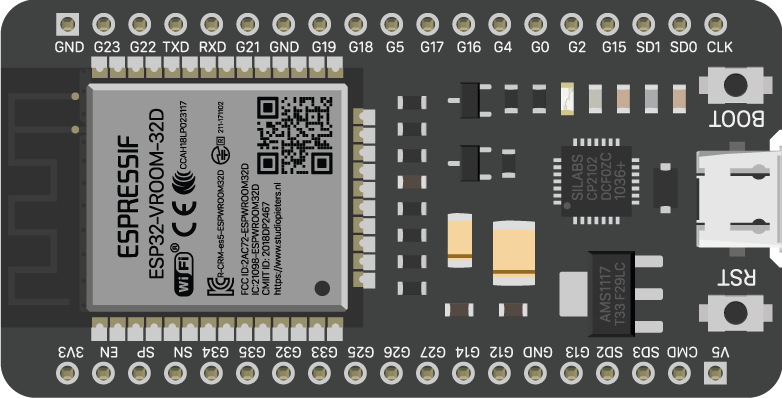
This is ESP WROOM 32/ ESP32 WiFi-BT-BLE MCU Module. ESP WROOM 32 is a powerful, generic WiFi-BT-BLE MCU module that targets a wide variety of applications, ranging from low-power sensor networks to the most demanding tasks, such as voice encoding, music streaming, and MP3 decoding. At the core of this module is the ESP32 chip, which is designed to be scalable and adaptive. There are 2 CPU cores that can be individually controlled or powered, and the clock frequency is adjustable from 80 MHz to 240 MHz.
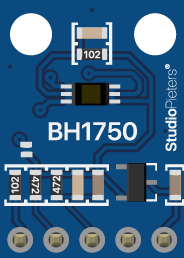
This is a BH1750 light intensity sensor breakout board with a 16 bit AD converter built-in which can directly output a digital signal, there is no need for complicated calculations. This is a more acurate and easier to use version of the simple LDR which only outputs a voltage that needs to be calculated in order to obtain meaningful data. With the BH1750 Light Sensor intensity can be directly measured by the luxmeter, without needing to make calculations. The data which is output by this sensor is directly output in Lux (Lx). When objects which are lighted in homogeneous get the 1 lx luminous flux in one square meter ,their light intensity is 1lx. Sometimes to take good advantage of the illuminant, you can add a reflector to the illuminant.So that there will be more luminous flux in some directions and it can increase the ilumination of the target surface.
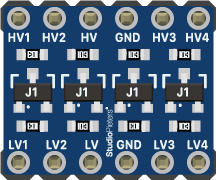
This module requires you to supply it with power from both the higher voltage level and the lower voltage level. Connect the higher voltage source to pin “HV” and its ground to pin “GND” near the “HV” pin. Also connect the lower voltage source to pin “LV” and its ground to pin “GND” near the “LV” pin. For example, if you were connecting your Arduino (5V signals) to a module (3.3V signals), you would connect the “HV” pin on the module to the 5V supply pin on your Arduino and the “GND” pin near the “HV” pin to the “GND” pin on your Arduino. Then, you would connnect the “LV” pin on the module to the 3.3V power source that is supplying power to the module and connect the “GND” pin near the “LV” pin to the 3.3V power supply’s ground. You would then connect the signal pin from your Arduino to one of the signal pins on this module (for example, pin “HV1”), and then you would connect the desired signal pin on the module to the corresponding pin on this module (“LV1” if the higher voltage signal is connected to “HV1”).
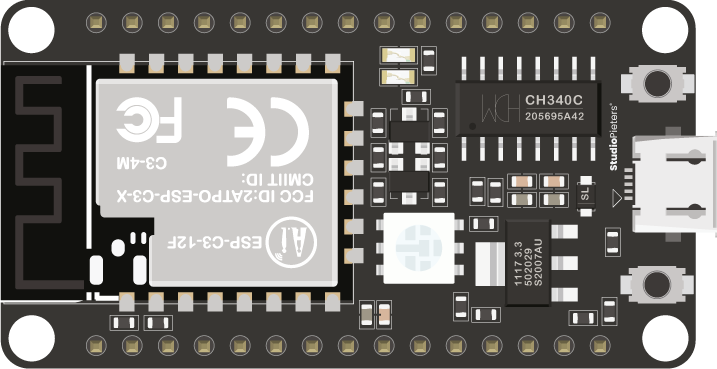
The ESP-C3-12F-Kit development board is a core development board designed by ESP-C3-12F for the ESP-C3-12F module. The development board continues the classic design of the NodeMCU development board, leading all I/O to the With pin headers, developers can connect peripherals according to their needs. When using the breadboard for development and debugging, the standard headers on both sides can make the operation easier and more convenient.
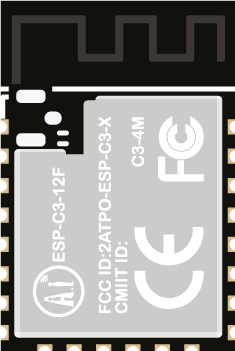
ESP32-C3 ESP-C3-12F RISC-V MCU 2.4GHz WIFI Bluetooth Microcontroller Module 4MB. The ESP32-C3 is a low cost RISC-V MCU with 802.11n WIFI and Bluetooth 5.0 LE capability. The ESP-C3-12F module combines the ESP32-C3 with 4MB of SPI flash, a PCB antenna, and a breakout board. It is pin compatible with the ESP-12F. ESP32-C3 family is an ultra-low-power and highly-integrated MCU-based SoC solution that supports 2.4 GHz Wi-Fi and Bluetooth Low Energy (Bluetooth LE) 32-bit RISC-V single-core processor with a four-stage pipeline that operates at up to 160 MHz IEEE 802.11 b/g/n-compliant • Supports 20 MHz, 40 MHz bandwidth in 2.4 GHz band • 1T1R mode with data rate up to 150 Mbps • 4 × virtual Wi-Fi interfaces Compatible with Arduino, MicroPython, and NodeMCU • Applications include: Lighting control, smart buttons, smart plugs, robotics, mesh networking, industrial field buses, health monitors, audio devices, proximity sensors, smart agriculture, and so much more.
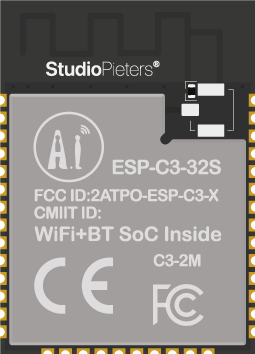
ESP-C3-32S is a Wi-Fi module developed by Ai-Thinker. This module core processor ESP32-C3 is a Wi-Fi+ BLE combination of system-level chips (SoC), designed for various applications such as internet of things (IoT), mobile devices, wearable electronics, smart home, etc. ESP-C3-32S module provides a wealth of peripheral interfaces, including UART,PWM,SPI,I2S,I2C,ADC, temperature sensor and there are 21 GPIOs. ESP-C3-32S has a variety of unique hardware safety mechanisms.The hardware encryption accelerator supports AES,SHA and RSA algorithm. Among them,RNG,HMAC and Digital Signature module provide more security features.Other security features include flash encryption and se-cure boot signature verification, etc. The perfect security mechanism enables the chip to be perfectly applied to various encryption products. ESP-C3-32S support low-power Bluetooth:Bluetooth5,Bluetooth mesh. Bluetooth rate support:125Kbps,500Kbps,1Mbps,2Mbps. Support broadcast extension, multi-broadcasting, channel selection.
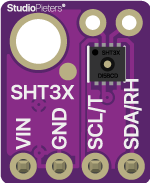
ensirion SHT30 is relative humidity and temperature sensor. It has good accuracy (0.2 °C for temperature and 2 percent points for humidity). This accuracy is in 0-65°C temperature range and 10-90% RH range. In case You need wider ranges with such accuracy, then SHT31 is what You need. What is also interesting in this sensor is ALARM pin. At sensor start You can program humidity and/or temperature levels. When measurements are outside of this range pin ALARM is in high state. This allows monitor parameters w/o microcontroller intervention. Pin ALARM can wake up µc or (as in our HECA) can be used to drive MOSFET.

That are my new parts for now, keep up to date by checking my GitHub repository here. Have fun with them!